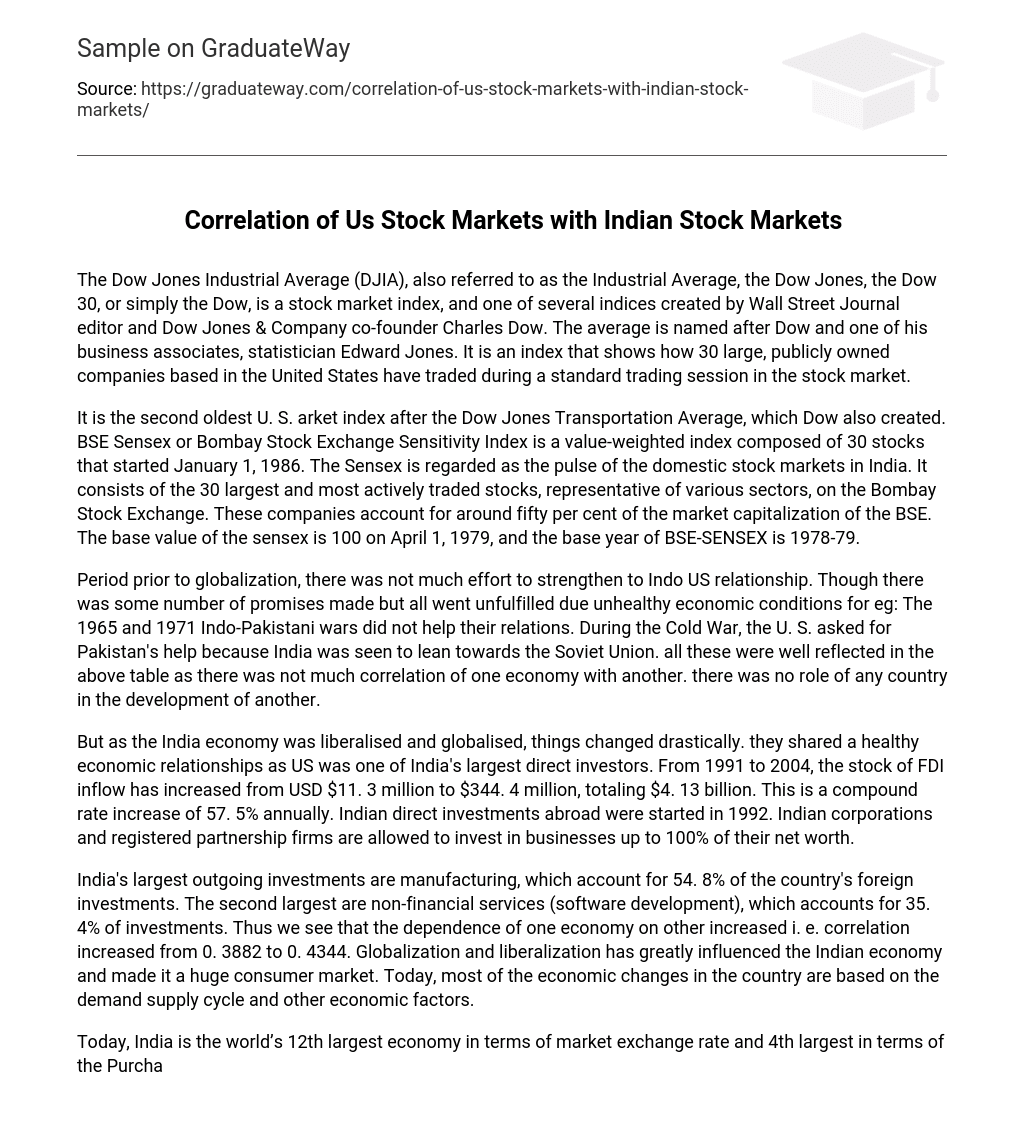The Dow Jones Industrial Average (DJIA), also referred to as the Industrial Average, the Dow Jones, the Dow 30, or simply the Dow, is a stock market index, and one of several indices created by Wall Street Journal editor and Dow Jones & Company co-founder Charles Dow. The average is named after Dow and one of his business associates, statistician Edward Jones. It is an index that shows how 30 large, publicly owned companies based in the United States have traded during a standard trading session in the stock market.
It is the second oldest U. S. arket index after the Dow Jones Transportation Average, which Dow also created. BSE Sensex or Bombay Stock Exchange Sensitivity Index is a value-weighted index composed of 30 stocks that started January 1, 1986. The Sensex is regarded as the pulse of the domestic stock markets in India. It consists of the 30 largest and most actively traded stocks, representative of various sectors, on the Bombay Stock Exchange. These companies account for around fifty per cent of the market capitalization of the BSE. The base value of the sensex is 100 on April 1, 1979, and the base year of BSE-SENSEX is 1978-79.
Period prior to globalization, there was not much effort to strengthen to Indo US relationship. Though there was some number of promises made but all went unfulfilled due unhealthy economic conditions for eg: The 1965 and 1971 Indo-Pakistani wars did not help their relations. During the Cold War, the U. S. asked for Pakistan’s help because India was seen to lean towards the Soviet Union. all these were well reflected in the above table as there was not much correlation of one economy with another. there was no role of any country in the development of another.
But as the India economy was liberalised and globalised, things changed drastically. they shared a healthy economic relationships as US was one of India’s largest direct investors. From 1991 to 2004, the stock of FDI inflow has increased from USD $11. 3 million to $344. 4 million, totaling $4. 13 billion. This is a compound rate increase of 57. 5% annually. Indian direct investments abroad were started in 1992. Indian corporations and registered partnership firms are allowed to invest in businesses up to 100% of their net worth.
India’s largest outgoing investments are manufacturing, which account for 54. 8% of the country’s foreign investments. The second largest are non-financial services (software development), which accounts for 35. 4% of investments. Thus we see that the dependence of one economy on other increased i. e. correlation increased from 0. 3882 to 0. 4344. Globalization and liberalization has greatly influenced the Indian economy and made it a huge consumer market. Today, most of the economic changes in the country are based on the demand supply cycle and other economic factors.
Today, India is the world’s 12th largest economy in terms of market exchange rate and 4th largest in terms of the Purchasing Power Parity. According to a report by the World Bank, the Indian market is expected to grow at around 8% in the year 2010. After liberalization the Indian economy changed a lot. The foreign companies entering in India increased, as cheap and highly skilled labour was available in India. Because of liberalization both FDI’s and FII’s started investing in India. Large number of foreign investors started investing in India.
And as a result the correlation between US and Indian economy started increasing further to 0. 7281. The foreign institutional investments (FII) amounts to around US$ 10 billion in FY 2008-09, while the rate of Foreign direct investments (FDI) has grown around 85. 1% in 2009 to US$ 46. 5 billion from US$ 25. 1 billion (2008). Because of globalization the trade between India and US has increased and thus correlation has also increased as shown in the table. From August 1997 to November 2000 it was 0. 3882 then in December 2000 to November 2005 it was . 4344 and from December 2005 to July 2010 it is increased to 0. 7281. The sharp rise in correlation from 0. 4344 to 0. 7281 can also be attributed to the increased participation of US in the Indian stock markets by way of Foreign Institutional Investments (FIIs). Thus, with more opening up of FDI and FII by India would further increase the correlation of Indian stock market to the US markets.





